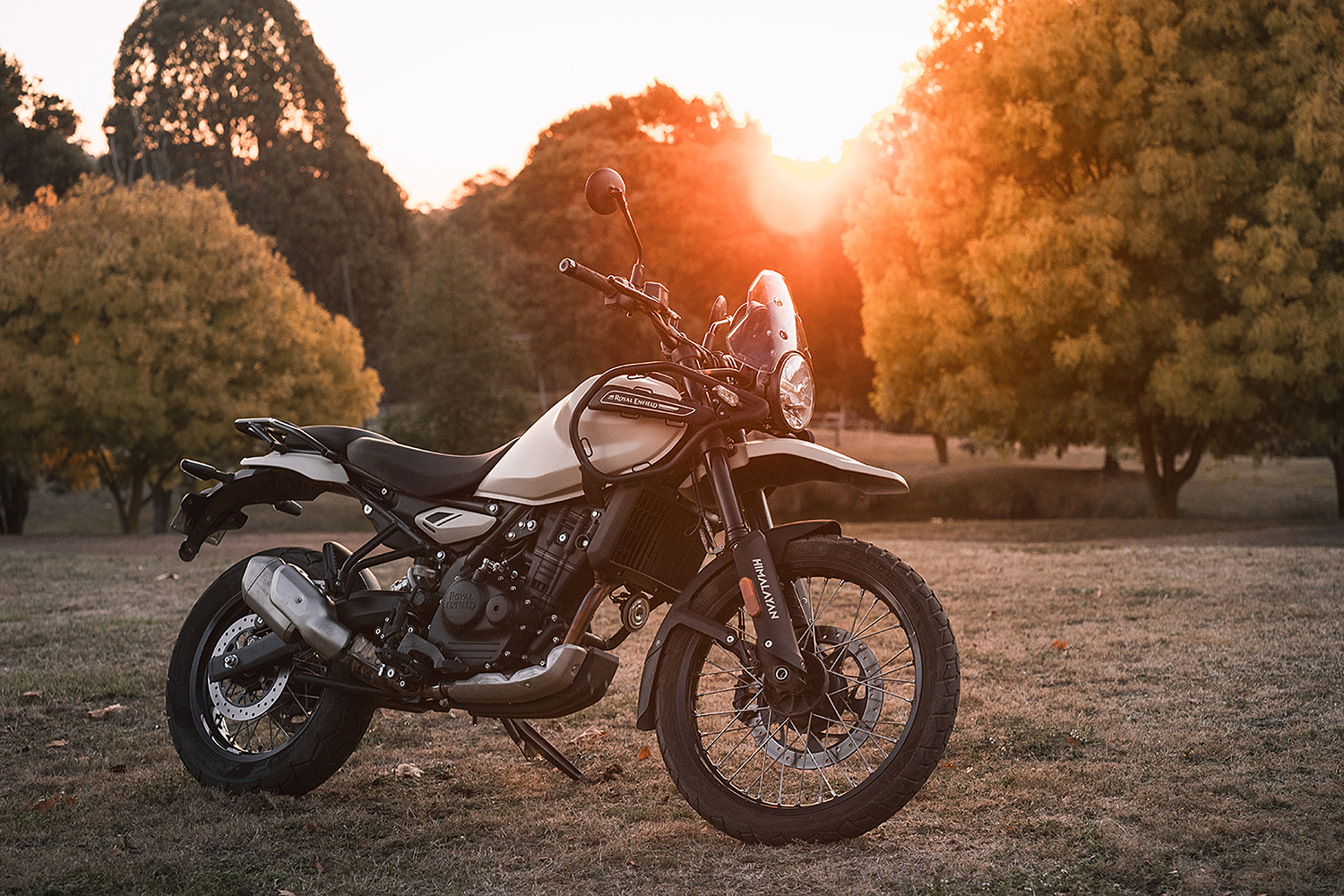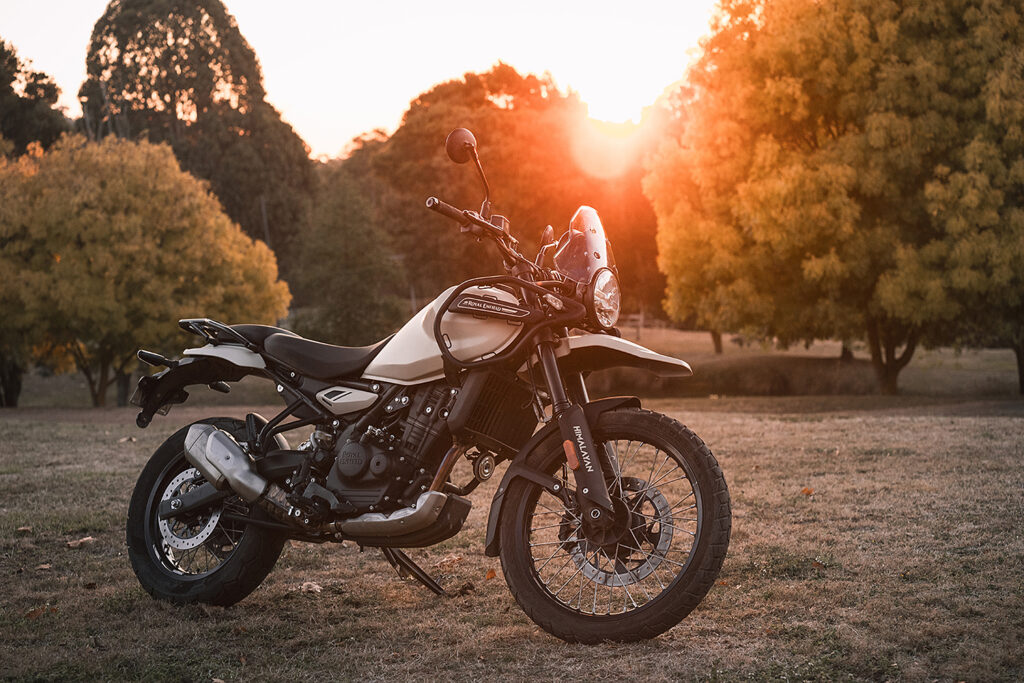
When we received an invite to the Australian launch of the new Royal Enfield Himalayan 450 in the Victorian High Country, we thought we’d send someone who has done more miles on an adventure bike than anyone else we know. Our mate Henry Crew holds the world record as the youngest person to circumnavigate the world on a motorcycle – so we think he was more than qualified for the job. Over to you Henry…
The original Himalayan 411 is incredibly popular, in fact it’s been the best selling middleweight bike in many regions. It travelled the world with the likes of Jack Groves, Nora Valdiva, and is currently being ridden from Alaska to Ushuaia by father/daughter duo Dave and Laura Rose. I had the pleasure of riding off-road with Laura and Dave for a day before their trip, and know Jack Groves pretty well. I’ve also ridden the 411 a fair bit and watched a fair amount of clients drag them around the trails. When talking about the bike I think we’d all lead with something to the effect of ‘it’s cheap and it does the job… just about’. Sure it tractors away, it has a relatively low seat height and it’s got proven capability, but you have to concede that it’s underpowered and overweight. Enter the all-new Royal Enfield Himalayan 450. Lighter, faster, more power, more torque, and still under $9k AUD.
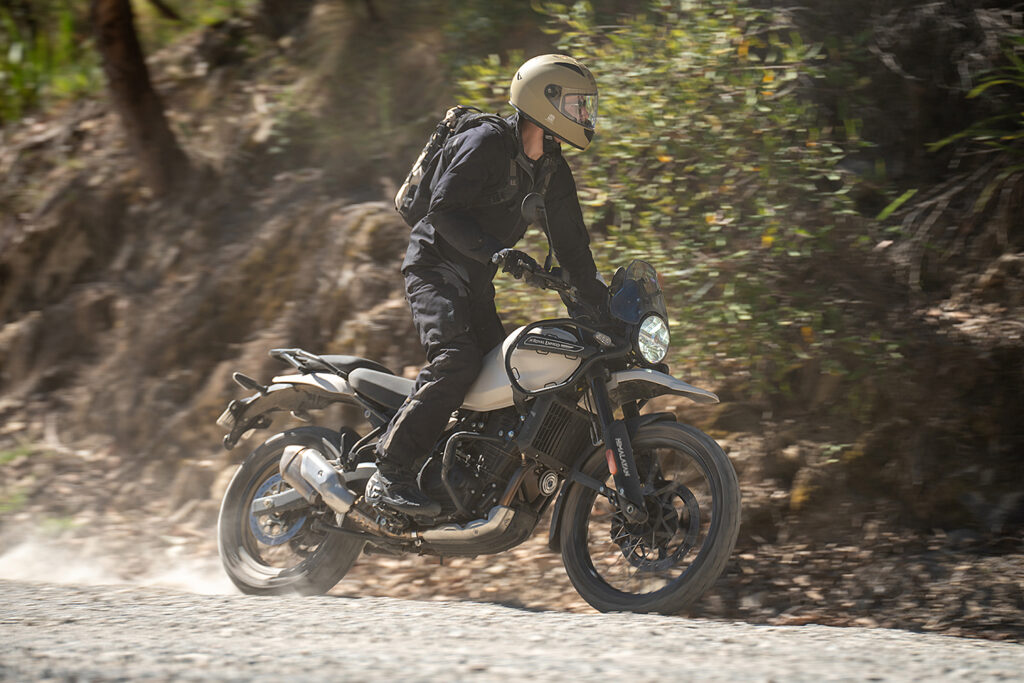
After two days riding the Himalayan 450 in the Victorian High Country, I have to say I’m thoroughly impressed by the bike, and how Royal Enfield researched, designed, and manufactured a product based purely on what their customers were asking for. Day one of our two day test ride was spent off-road with none other than Cameron Donald (2x IOM TT winner among many other achievements). I felt at home on the Himalayan straight away, even with a set of yet-to-be-broken-in MX boots strapped to my feet; everything felt like it was where it should be and, most noticeably, the power response matched the bike. The engine felt peppy and forthcoming. The seat and riding position were a marked improvement over the original 411, with the bike now designed to cinch in at the waist, making it even easier to get your feet on the ground. This has real implications that benefit anyone a little short in the leg.
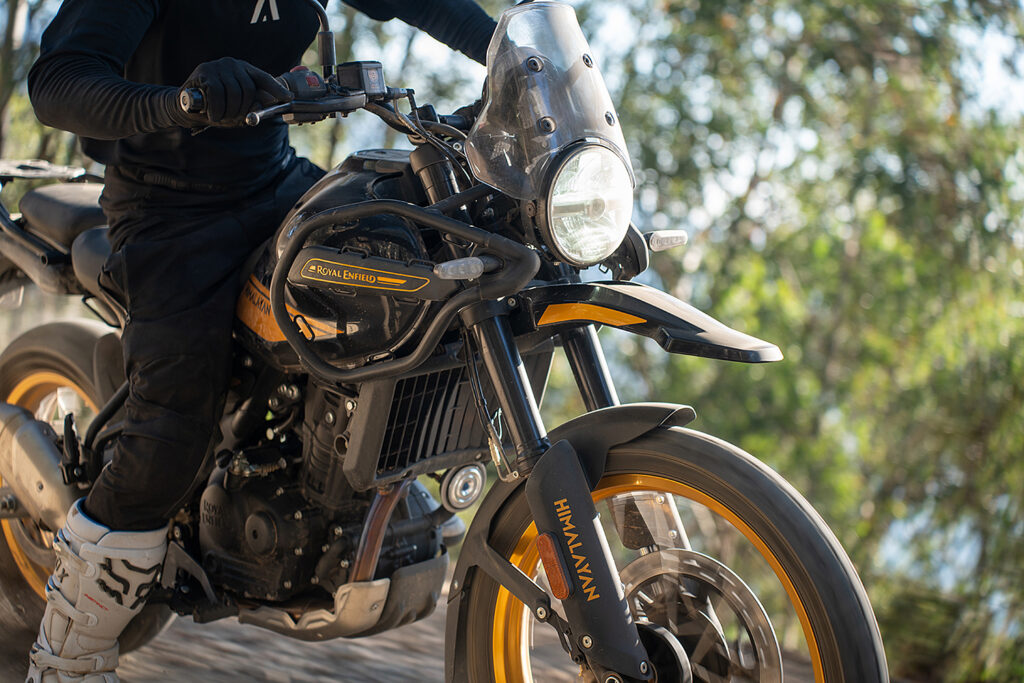
Although the seat height has risen by 25mm to 825mm with the seat in the low position (845mm in the high position), I would argue that it felt easier to plant a foot on the ground. If you’re really struggling, an optional low seat brings the height down to 805mm. Speaking of options there’s going to be a whole raft of extras available – from rally seats to panniers, fly screens, crash protection, and tubeless rims.
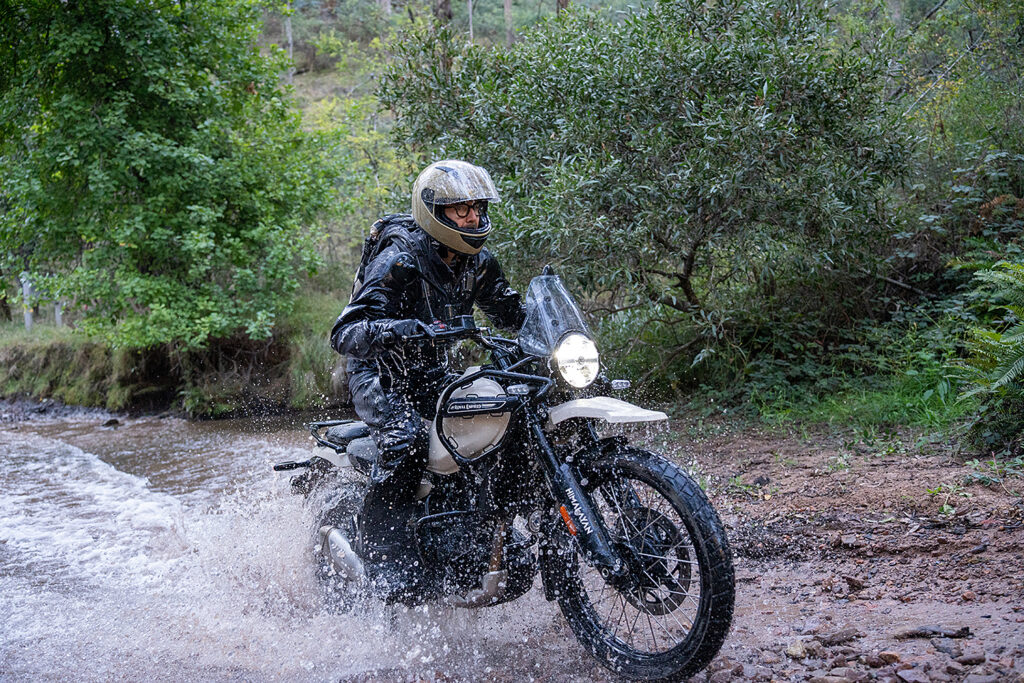
This low seat height has been achieved at the same time as increasing the ground clearance to 220mm through a myriad of incremental changes that seem to have had a domino effect on the design. To name a few enabling factors; the engine has been rotated forward, which reduces its height and, in combination with the relocation of the airbox, allows the shock to be mounted almost horizontally, which again reduces height and allows the catalytic converter to be tucked away under the swingarm. All of this has resulted in a longer, lower and three kilogram lighter machine which creates stability that inspires confidence on and off-road.
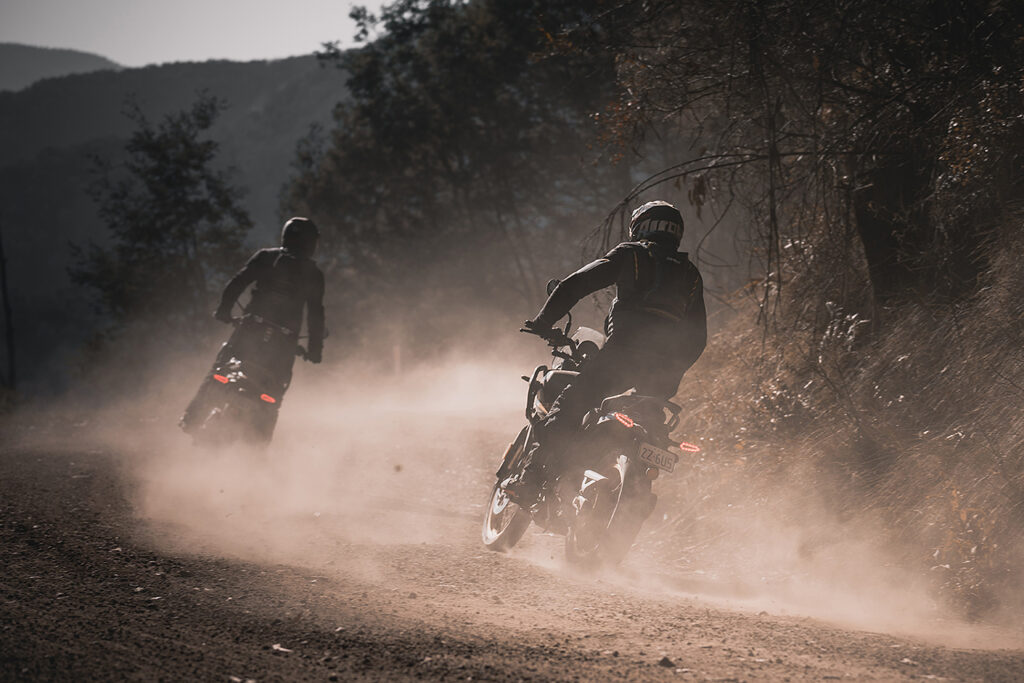
Standing up on the pegs, which are nice and wide as well as being rubber-mounted to reduce vibration, the riding position remained comfortable – which is unusual in the road biassed adventure bike market, there was no hunching over and all controls remained ergonomic. Even on 50/50 tyres the Himalayan performed well off road, although struggling for traction under hard acceleration and in the corners which, when combined with the increases in length can make it feel slow and hesitant when turning.
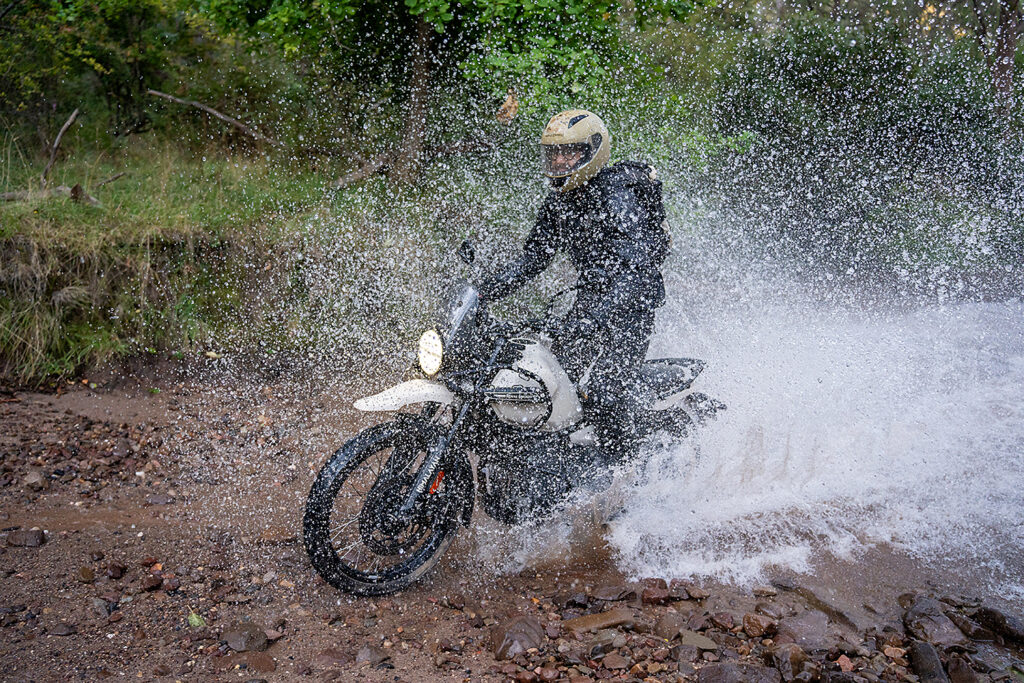
There’s definitely a sweet spot when riding this bike off-road. If not pushing hard it will feel totally at home cruising around corners and has the guts to handle a jump here and there. It’s not that it’s incapable of riding faster or on gnarlier terrain, in fact I was very impressed with what the bike tackled, it’s more that it does perfectly what it was designed to do for the people it was designed to do it for. This is truly an adventure bike built to be used for adventures. Ten thousand kilometre service intervals and a three year unlimited mileage warranty only further support this. Even the increased seventeen litre fuel capacity and claimed four hundred and fifty kilometre range scream ‘ready for adventure’.
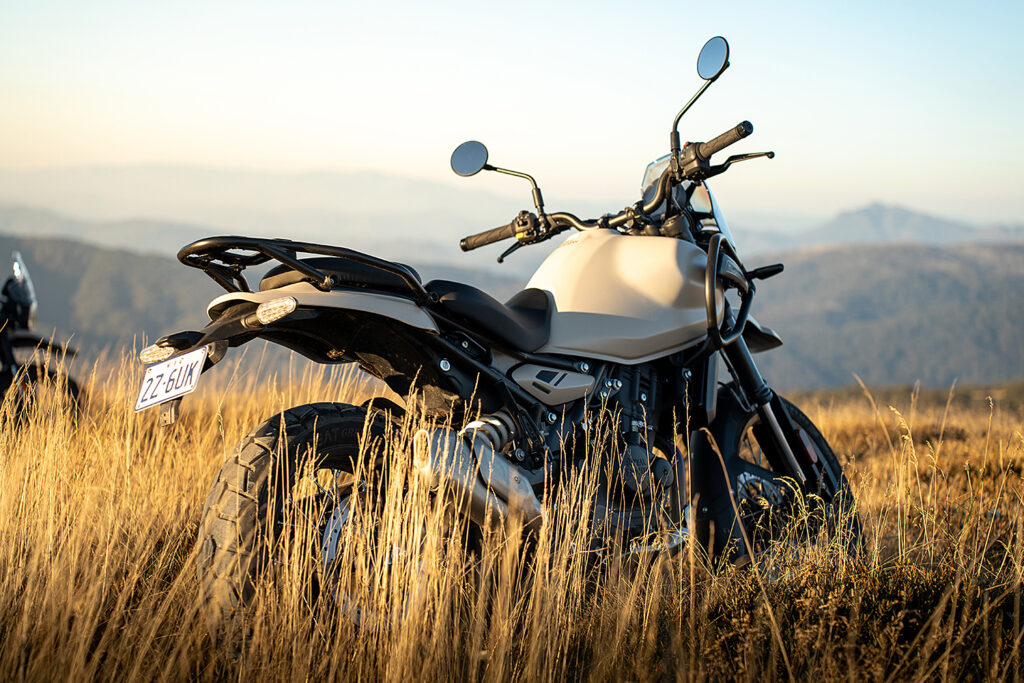
Royal Enfield’s brand new liquid cooled Sherpa 450 engine is the lightest and most powerful engine ever produced by the historic brand. It has brought consistent gains in torque and power across the rev range when compared to the 411 Himalayan and, on a dyno, has gains over the competition too. The Sherpa 450 engine has retained the ability to ‘tractor’ but can feel slightly sluggish until it climbs a little higher in the rev range. drive-by-wire has brought the bike into the modern age, enabling selectable engine mapping. Currently you can choose to ride the bike in Performance Mode, or Eco Mode (which reduces the power to that of the 411 Himalayan), you also have the option to ride either of these modes with rear ABS switched off.
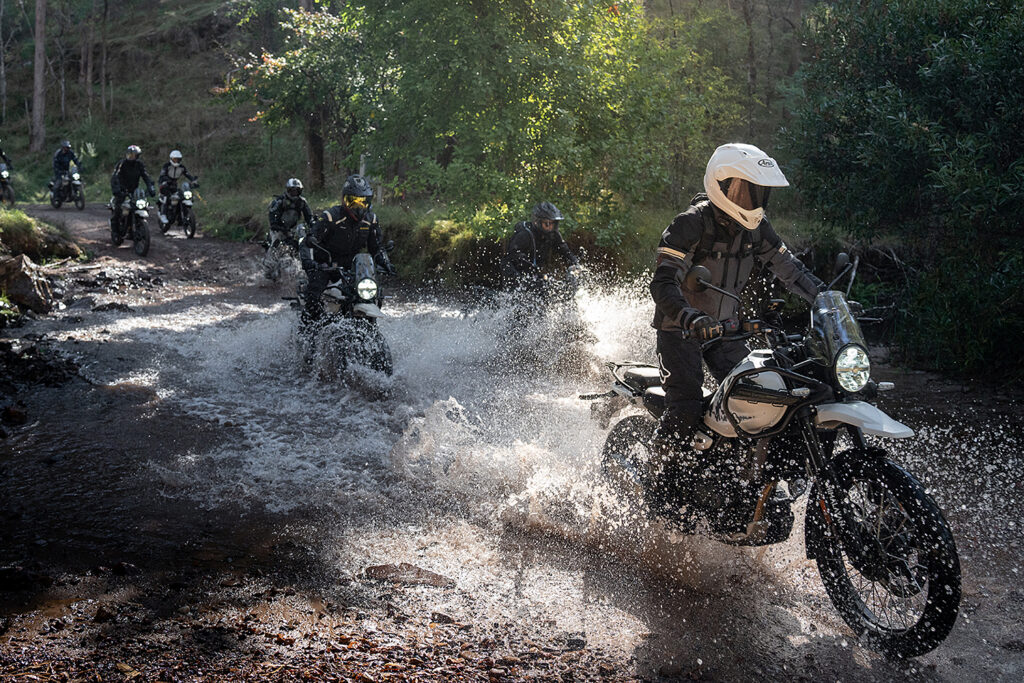
We took full advantage of the dual channel switchable ABS on our off-road excursions and, although I would prefer to be able to switch off the front ABS too, I was pleasantly surprised by how unintrusive it was. The ByBre brakes (a subdivision of Brembo) had great modulation and all the stopping power you could want. The rear was especially powerful thanks to the increased disc size, which is 30mm larger than on the previous model. This is another change brought about by conversations with customers, who reported relying heavily on the back brake.
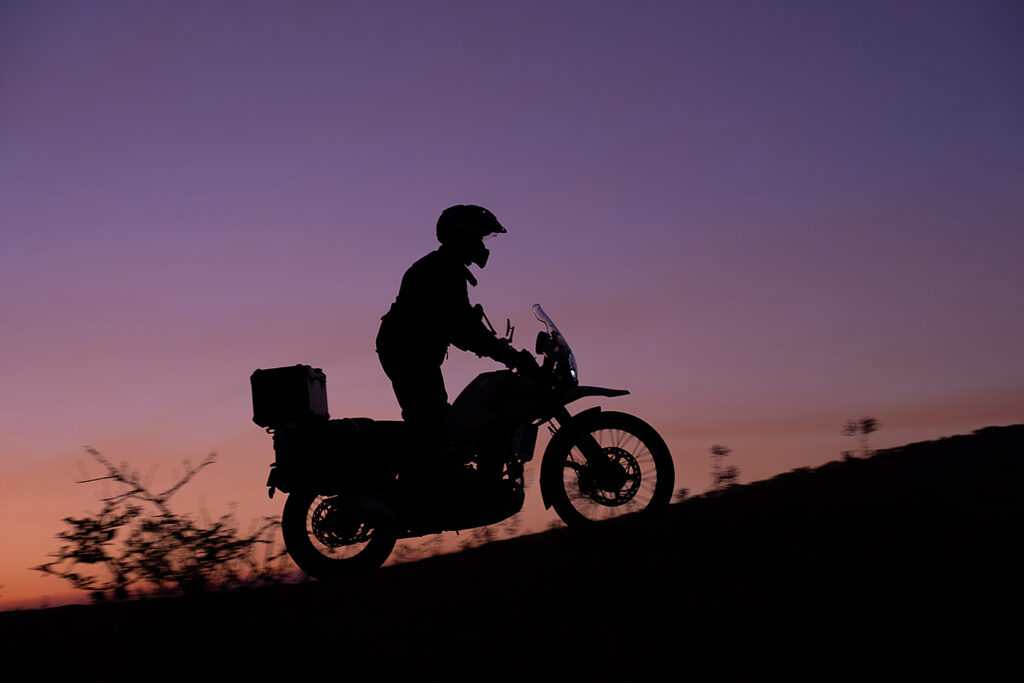
Although not adjustable, the Showa designed 43mm upside down forks provide 200mm of travel and a smooth ride even when flying over rocks and small jumps. They didn’t once feel like they were about to bottom out and soaked up hard impacts without complaint. The rear Showa mono-shock also offers 200mm of travel but has adjustable spring preload. On-road during day two the suspension provided the perfect level of comfort without compromising rigidity in the twisties.

When cruising back to Melbourne on day two the bike performed as I had hoped; comfortable, fun, sturdy and with enough get-up-and-go to make the most of the backroads. We were riding continuously for around three hours and no one complained of a sore bum. A little more wind protection from a larger screen (an optional extra) would have been nice and I began to wish for cruise control towards the end but everything worked as it should and there was a surprisingly low amount of vibration through the bars, mirrors, and pegs.
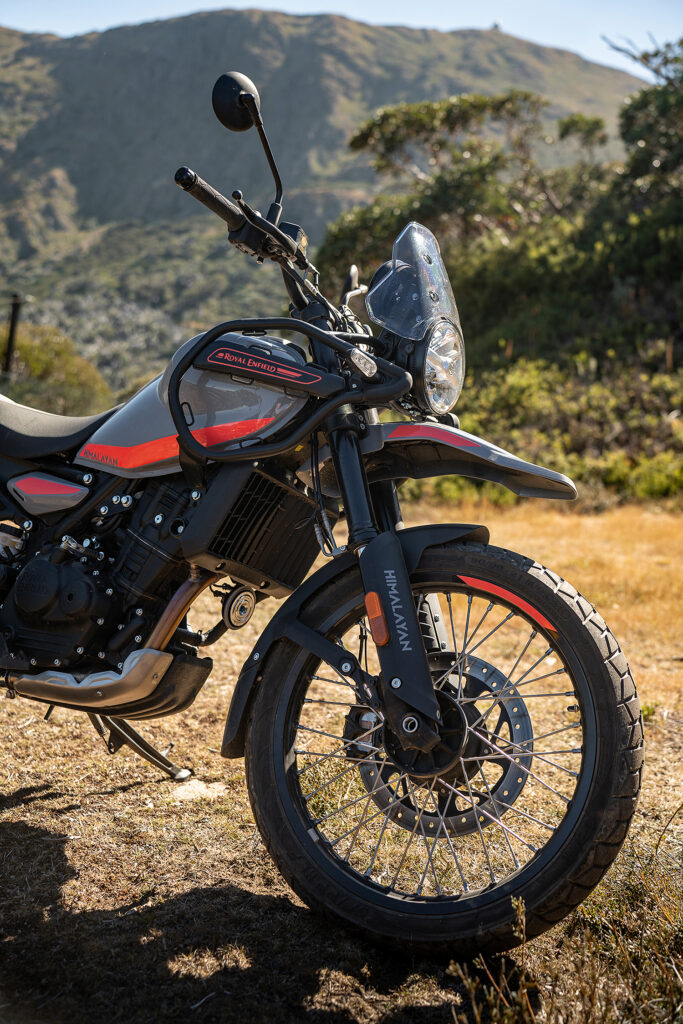
Getting after it in the hills the bike had plenty of power, if you worked the revs, and turned smoothly, feeling stable and controlled. It’s not a bike that begs to be thrown into corners and screams out the other side but as a big proponent of the theory ‘it’s more fun to ride a slow bike fast than a fast bike slow’ I was fully satisfied by the riding experience.
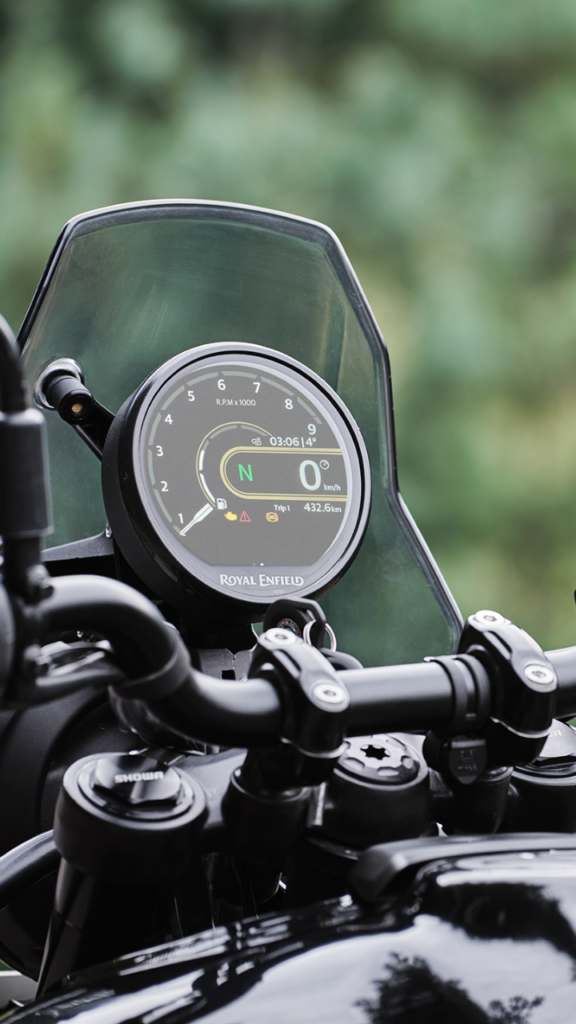
One of the first things you notice when sat on the bike is the new TFT dash which is well designed, good looking, and functions as it should – Enfield have followed their ‘ride pure’ ethos to a tee, stripping back to the essentials but not in a way that hints of ‘poverty spec’. The whole bike feels sturdy and well put together, from the bars to the footpegs, even the optional engine guards impressed me with their design. There were a few groans from four competition winners who had been invited to join the event, and have deposits down on new bikes, mainly around the lack of cruise control and tubeless rims (which it sounded like they’d been promised). There was also disappointment due to the limitations of the built-in navigation, which is not a stand alone system, and runs off your mobile phone through screen casting. Initially the TFT will only use google maps. One benefit to the TFT running from an app, aside from keeping costs down, is that app updates can continuously improve the system and add more features such as importing GPX files, which we are told is currently in the works.
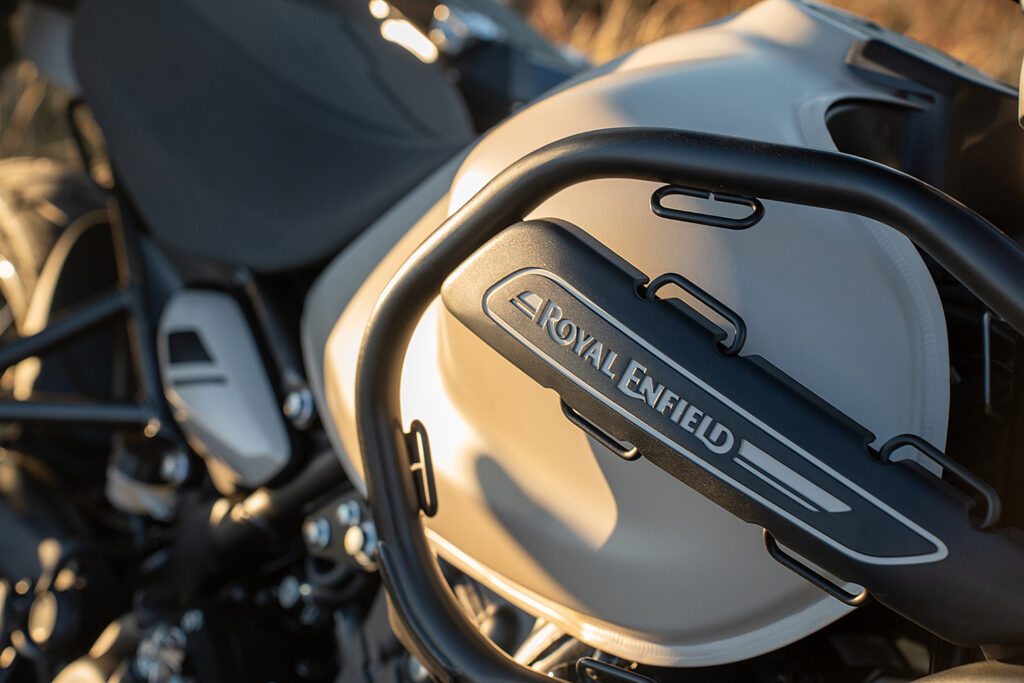
Unfortunately at the time of the launch the app to connect to the TFT had not been launched and as such we were unable to test the turn-by-turn navigation and other features such as hands off calls and music control. The Himalayan 450 comes equipped with an LED headlight and indicators – a first for the brand. At the rear of the bike you will find integrated indicator / brake lights, which aid in increasing wheel travel, but in my opinion make it harder to see a turn signal when braking. They did however manage to survive a week of journo abuse off-road without a single blinker being broken, which is quite an achievement.
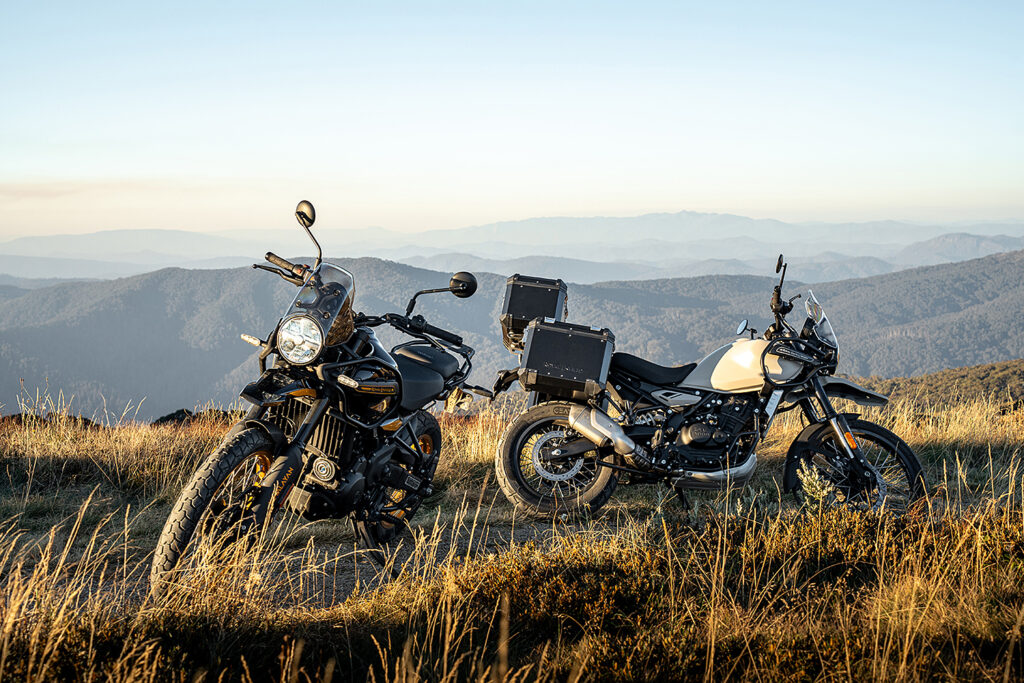
For a small to mid sized adventure bike the Royal Enfield Himalayan 450 is great. For a small to mid sized adventure bike that retails from $8990 rideaway… it’s absolutely brilliant. As someone who has travelled far and wide on a motorcycle in some super remote places this bike has almost everything on my adventure bike checklist. Four hundred and fifty kilometres on a tank, ten thousand kilometre service intervals, three year unlimited mileage warranty, three year roadside assistance, service centres everywhere, comfort, confidence, simplicity, capability, accessories. On top of all this it’s great fun to ride and I expect to see it going even further than the 411 has been taken. I certainly believe it could handle almost any adventure thrown at it, which I can’t say for a lot of adventure bikes.
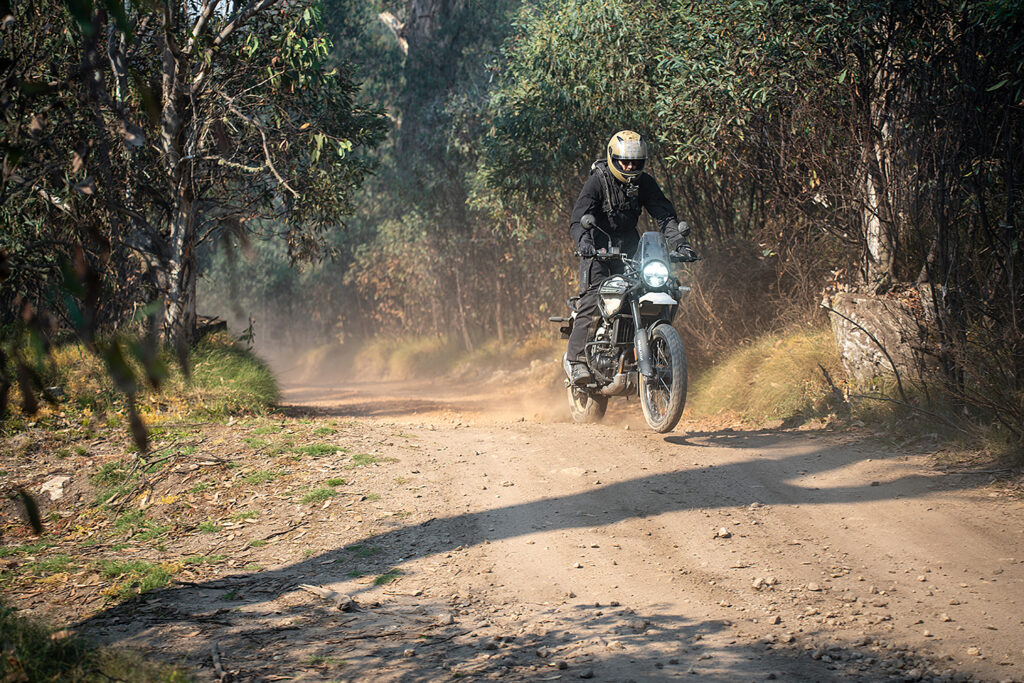
In my opinion the Royal Enfield Himalayan has gone from ‘cheap’ to ‘great value for money’ and that is a giant step in the right direction. It’s great to see a brand develop a bike with such a focus on feedback from customers and deliver something that’s such a big improvement on the original. I’m truly excited to see these bikes enable and inspire riders around the world to take that trip they’ve been dreaming of for years, or plan something even crazier.

